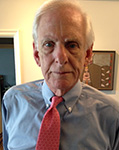Health professional school leaders must be seen as a vital health sector resource, and used accordingly.
 There have been over 4,000 known Ebola cases in Liberia, Sierra Leone, Guinea, and Senegal, resulting in 2,000 deaths. Of this number over 300 health workers have become sick and roughly half have died. There has been a significant immediate funding response from the international community including an initial $21 million investment in protective gear, chlorine bleach, and food aid, and deployment of CDC and USAID personnel, with additional USAID funding totaling $100 million. Further, there are commitments from the World Bank ($230 million) and the African Development Bank ($60 million).
There have been over 4,000 known Ebola cases in Liberia, Sierra Leone, Guinea, and Senegal, resulting in 2,000 deaths. Of this number over 300 health workers have become sick and roughly half have died. There has been a significant immediate funding response from the international community including an initial $21 million investment in protective gear, chlorine bleach, and food aid, and deployment of CDC and USAID personnel, with additional USAID funding totaling $100 million. Further, there are commitments from the World Bank ($230 million) and the African Development Bank ($60 million).
These financial commitments are critical, but as Stephen Morrison of the Global Health Policy Center, Center for Strategic and International Studies, wrote recently, “On the ground, several thousand additional workers capable of implementing emergency disaster programs are needed, and will require protection and expedited training and deployment. These critical elements are needed urgently today, but where will they come from?” Read more »
